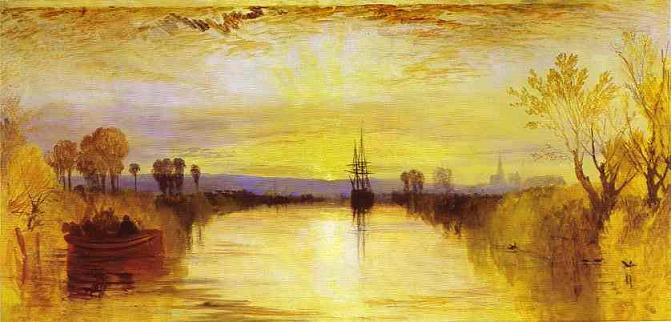Knowledge: The year the trees stopped counting
January 20, 2010
The ebb and flow of years gone by leave reliable traces on the world. High and low water marks, where spring freshets evaporate into stony draws and then fill again. Layers of ash in hearths, as the nights chill and then grow mild once more. Leaf and soil patterns, the traces of floods, meltwater pools and frost-cracked rocks. Organic signs of years passing.
One reliable record of the yearly cycle that is less likely to get blown away, stomped on, covered with dirt: the records of trees.
A big Douglas-fir stump with hundreds of rings once put me in awe at about age seven; the proof that this tree too was living at the time of Oregon’s statehood (1859) and even before the fabled Lewis or Clark set foot in these damp northwest woods. Reliable rings, marching concentric outwards, the newest at the outside edge.
Tree stumps are as reliable for recording dates as they are physically sturdy: a year per ring, a simple way to count off the decades. So it must have been quite perplexing for early stump-scientists (so-called “dendrochronologists” in the modern parlance of the discipline) when they started tallying up the rings for the 19th century.
In my mind I see a studious gentleman squinting, perplexed, at a downed chestnut on the northeastern American seaboard, or maybe a grizzled yeoman farmer staring, curious, at a fresh-fallen birch in his English pasture, or maybe a lettered man of leisure summering in a French bois, stepping over the stump of an oak, stopping to count the rings to his sweetheart and puzzling over an apparent counting error.
Anyone in the wide sweep across north America and northern Europe who could count accurately stumbled into the same problem. It’s as if the trees missed a leap year or lost count, or got confused. They were all—most notably the hardwoods—missing an entire year.
The best recorders of years are hardwoods: elms or oaks. Even in lean years they build rings, albeit narrower ones. Whatever was limited that year (from the perspective of the tree) will define the shape and size of that year’s ring. Droughts and cold snaps, abusive windstorms, sun-greedy neighboring trees: all these show up as an inflection in the year’s ring. Yet even lean years get their ring, with the telltale broad, quick flush of spring nutrients followed by a slower, denser growth.
But, if you look at the stump of any hardwood in the temperate regions of the northern hemisphere, it will seem that 1816 never happened.
The year without a summer
American Independence Day, the Fourth of July, 1816. The fledgling country had recently emerged from the War of 1812, a conflict that gave the nation growing confidence and identity. This year’s celebrations were optimistic, but revelers stood shivering in heavy overcoats in New England despite clear skies. It’s likely they could see their breath.
In fields, fresh sprouts browned and rotted. In parts of New York, there was a hard frost at least once every month. As recently as the tenth of June, a full foot of snow had blanketed a shivering Quebec City. Hopeful farmers replanted, only to be frozen out yet again.
In Europe, it was actually somewhat worse. Though young London artist JMW Turner painted landscapes Thames-side of sudden, beautiful sunsets, the picture elsewhere was not rosy. Food riots in France intersected with a formidable typhus epidemic: from the starvation and disease, perhaps 200,000 perished. It rained essentially the entire year in Ireland. Famine was widespread.
And the trees bore no rings.
An explosion far away
April, 1815. On the Indonesian island of Sumbawa, a furious Mt. Tambora—the largest observed volcanic eruption in written history—relieved itself of 160 cubic kilometers (38 cubic miles for dweebs like me) of material, rating a super-colossal 7 on the Volcanic Explosivity Index. By way of contrast, my self-experienced eruption of Mt. St. Helens in 1980 was a mere “paroxysmal” 5.
All of this ejecta hung out in the atmosphere over months and even longer, blanketing the earth and affecting the ability of solar energy to reach the earth’s surface. Mr. Turner’s fabulous sunset paintings may have benefitted from the complex colors created by sunlight reflecting off of ash, but the rest of the world did not.

"Chichester Canal" by JMW Turner. The fantastical sunsets at this time in England may have been a side effect of the 1815 Mt. Tambora eruption.
Add to this the mysterious period called the Dalton Minimum, a time of depressed global temperatures that has yet to be fully understood, and you have a recipe for a global chill so pervasive in some regions that even hardwoods do not bear a tree ring for 1816.
And yet that summer it was hot in the Ukraine.
Go figure.
Sources
- http://www.sonic.net/bristlecone/dendro.html
- http://www.dandantheweatherman.com/Bereklauw/yearnosummer.html
- http://www.gi.alaska.edu/ScienceForum/ASF0/098.html
- http://en.wikipedia.org/wiki/Year_Without_a_Summer
- http://archaeology.about.com/od/dendrochronology/a/tree_rings.htm
- http://en.wikipedia.org/wiki/Volcanic_Explosivity_Index
Special thanks to Cameron Mallory for the post concept idea (tree rings).
2 Comments
Recently Reviewed
Get the Books
Read my Reviews
Related Posts
- Knowledge: Tides
January 26, 2010 - Knowledge and Travel: Pine Mountain Observatory, Messier Objects
February 16, 2010 - Knowledge: Imbolc, Candlemas and others: the many forms of a waking earth
February 1, 2010 - Summer: Now, Please
June 7, 2005 - Knowledge: Getting everyone on the same page…of the calendar
January 15, 2010




Ejecta! Good word. Good story, too. Thanks for some daily smartening.
My comment got deleted when I clicked on a link, whoops. Anyway, I tried to find an image of a missing ring. I’m wondering is it “missing” or just very narrow? If it is missing completely, how would one know? Unless it was known what year the tree was started growing.